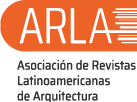Recover the sidewalk, save urban life! Observations for an integral intervention of the Public Space System of Managua
DOI:
https://doi.org/10.5377/arquitectura.v2i4.9142Keywords:
Public space, pedestrian city, integral intervention, connection, connectivity, ManaguaAbstract
Currently, the city of Managua is subject to a series of interventions in the public space or system of territorial and urban free spaces. Recently, between 2015 and 2017, the Rubenia overpass, the new urban bus stops, the renovation of a network of intelligent traffic lights, and the construction of a multi-purpose building to celebrate sporting events, among other works linked to the celebration, were built. of the XI Central American Sports Games, Managua 2017, still under construction. Also, we have seen the successful completion of many parks in our neighborhoods. Undoubtedly, these operations come to give quality of life to all citizens and are an undeniable sign of the process of urbanization that the capital has experienced since 2008. This process of urban transformation is broad and has other scales of intervention, such as the construction of the Estadio de Béisbol, located in an urban area that has been shaping up for decades as one of the most symbolic centralities of the new Managua, gathering particular buildings such as the Cathedral, the traditional Shopping Center and the Intercontinental MetroCentro Hotel.
The observation of these interventions in the public space raises the need for a reflection on the meaning and the basic concepts of this practice. It seems intuited a strategy of specific operations on specific areas, which present urban conflicts especially in the area of road and pedestrian circulation. However, from this same urban praxis arises the need to ask about the totality of the problem in a systemic way: Is the increase of the road box on the express roads and the construction of overpasses to improve road circulation sufficient, and ignore pedestrian circulation in the solution of public space? Is it enough to technologically improve the traffic lights network and improve the conditions of shelter at bus stops? What are the urban qualities of high road crossings and how do they contribute to the complexity of the definition of the street? There is no doubt that these urban operations are key in improving the efficiency of transport and the circulation of the city, but at the same time, they seem to be partial and disconnected insofar as they leave out several aspects related to the complexity of the Spaces System. Urban and Territorial Publics.





















